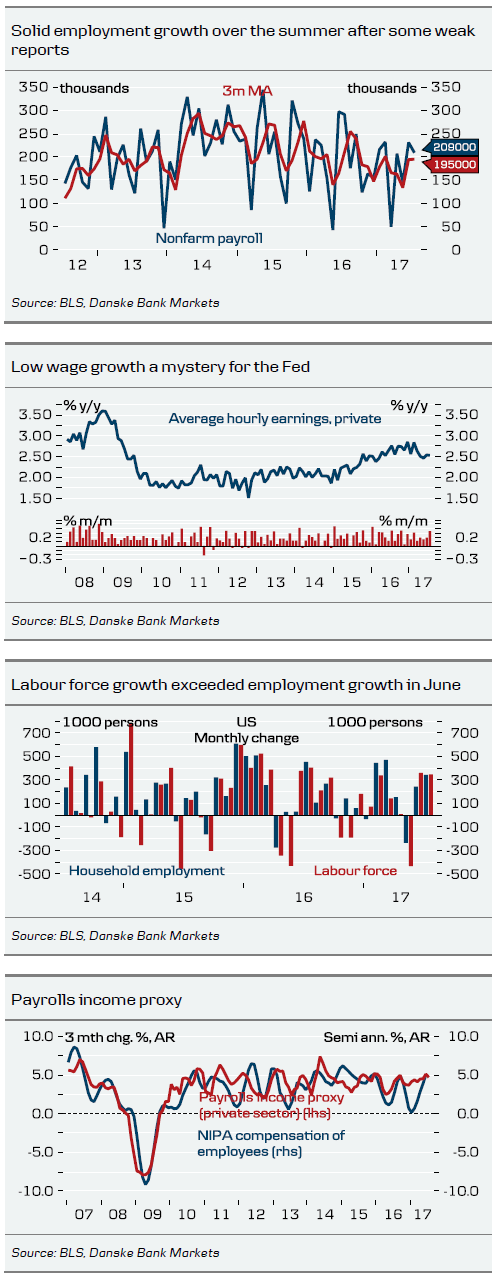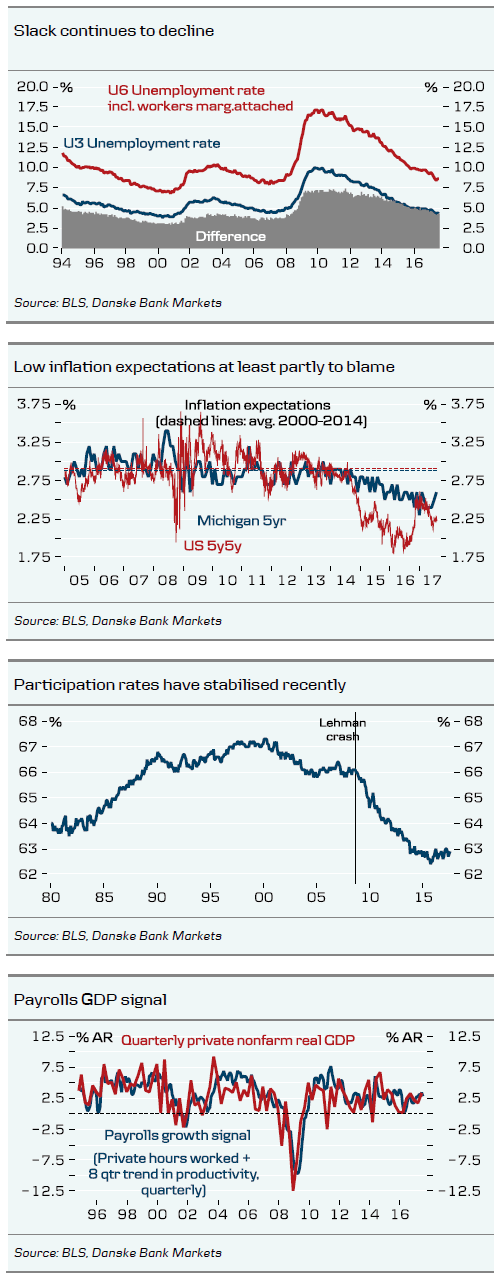Market still eager to buy EUR/USD despite strong report
In terms of employment growth, we have now had two strong reports in a row, as employment rose by 209,000 in July and June was revised up to 231,000. Some of the strength in recent months is likely catch-up from the weakness earlier this year, as US growth seems stable slightly above trend growth.
As employment has risen for 82 consecutive months and the labour market recovery is expected to continue, focus was on the unemployment rate and wage growth, as these are more important for the Fed’s decision whether to continue tightening monetary policy or not. The unemployment rate fell from 4.4% to 4.3%, while wage growth was unchanged at 2.5% against expectations of a fall to 2.4%. The combination of lower unemployment and better wage data sent EUR/USD slightly lower on the announcement, as it supports the Fed’s case for announcing ‘quantitative tightening’ (shrinking the balance sheet) in September and raising rates again in December.
However, we still think the jobs report underpins the Fed’s dilemma: unemployment and (wage) inflation are low at the same time (the opposite situation of the 1970s), just as we wrote in Flash Comment US: Fed’s dilemma, 7 July. Also, the Fed was slightly more dovish at the latest meeting (see FOMC Review: Smidgen dovish but it does not alter the overall picture, 26 July). The reason the Fed continues hiking is Janet Yellen and co’s strong belief in the Phillips curve. The tight labour market should be sufficient to push wage growth and inflation higher eventually.
In our view, the problem is that the tightness of the labour market is not the only factor determining wage growth, as second-round effects following many years with low inflation have hit wage growth. When employees expect inflation to remain low, they can live with low wage growth, as real wage growth may still be solid, making it less likely inflation will reach the target.
EUR/USD fell slightly on the NFP announcement. However, the very modest price action shows the market’s eagerness to buy EUR/USD. In our view, we could see a push towards 1.20 over the coming one to two weeks, as momentum is very strong. However, the move is likely to fade ahead of the Jackson Hole symposium on 24-26 August and the ECB meeting on 8 September, with the pressure building on the ECB to raise concerns about the strength of the EUR. The effective EUR is now back to September 2014 levels. Fundamentally, we expect EUR/USD to rise further over the coming 12 months on relative growth and valuations. We forecast EUR/USD at 1.22 in 12M.















